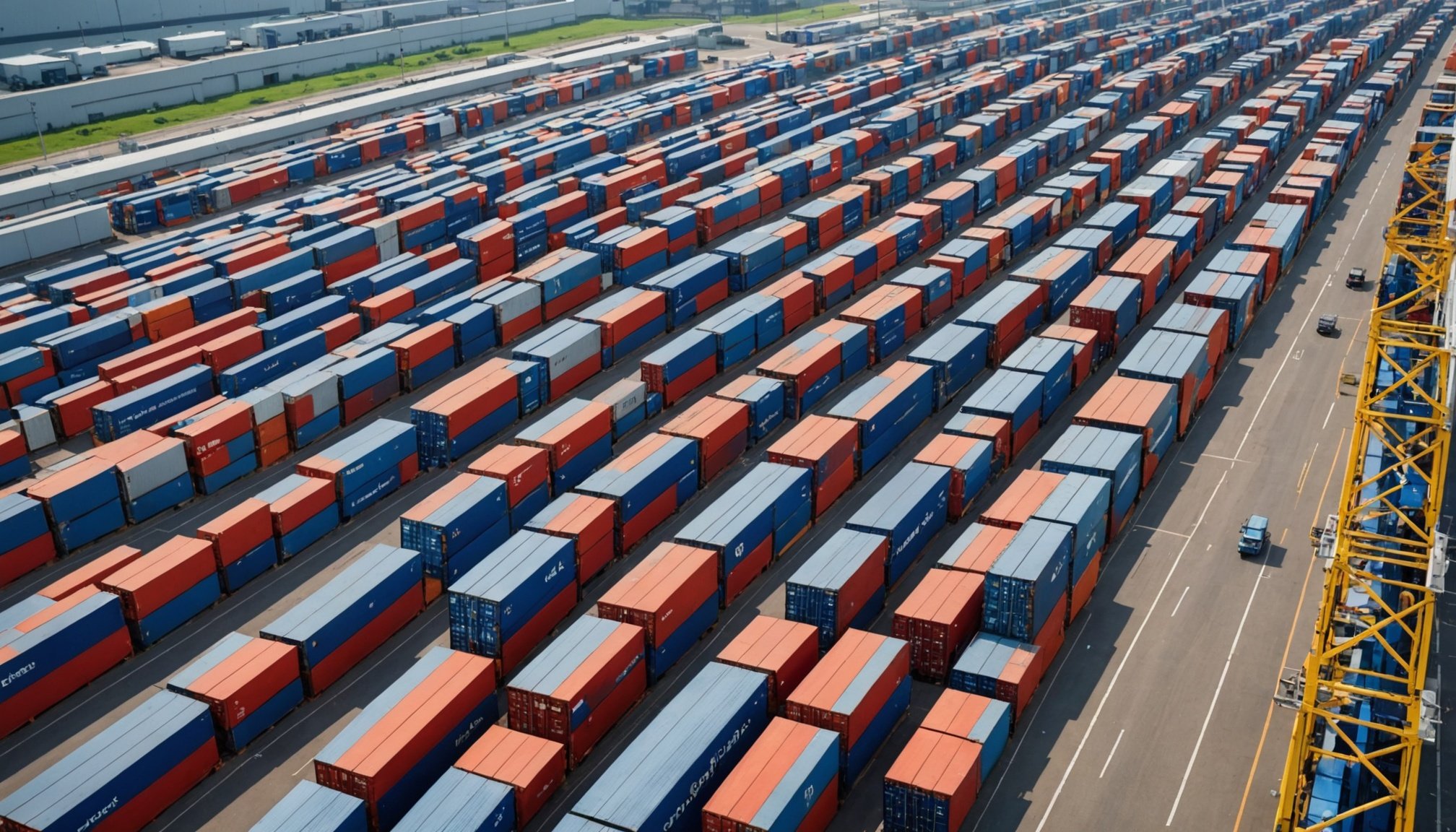Understanding Data Analytics in Logistics
The dynamic field of data analytics is transforming the UK logistics sector by introducing innovative solutions to long-standing challenges. Data analytics entails gathering, investigating, and dissecting vast volumes of information to identify patterns and bolster decision-making processes. Within logistics, this means optimising routes, effectively managing stock levels, and enhancing customer service.
In the UK logistics landscape, current trends are heavily influenced by a surge in e-commerce and digitalisation. Companies are increasingly adopting analytics tools to sift through large datasets, enabling them to predict demand surges, reduce delivery times, and adapt swiftly to unforeseen circumstances, such as sudden changes in consumer behaviour. This proactive approach helps logistics firms remain competitive and responsive.
Also to read : Revolutionizing fraud prevention: leveraging machine learning for safer online retail in the uk
A crucial benefit of data analytics is its ability to drive operational excellence. By providing deeper insights into every aspect of the supply chain, logistics companies can identify inefficiencies and implement targeted improvements. This not only reduces costs but also enhances service quality and reliability. For instance, predictive analytics can foresee equipment failures before they occur, preventing costly downtime and ensuring smoother operations. Ultimately, data analytics empowers logistics providers to make informed decisions, delivering a more seamless and efficient experience for all stakeholders involved.
Best Practices for Implementing Data Analytics
Successful data analytics implementation in the UK supply chain hinges on aligning analytics strategies with business objectives. First and foremost, organisations must identify the right metrics to measure success. Asking the question, Which metrics truly reflect our business goals?, sets the foundation. These metrics should be specific, quantifiable, and tailored to the unique operations of the organisation.
This might interest you : Discover the best ai voice-over tool for video creation
Once metrics are established, integrating data analytics into existing supply chain processes becomes vital. Steps include evaluating existing data sources, upgrading infrastructure to support data flow, and training staff. This ensures that the data analytics implementation is streamlined and begins to deliver valuable insights promptly.
Aligning analytics strategies with business objectives drives the organisation towards a unified goal. It’s like ensuring every part of a machine works seamlessly towards one outcome. Regularly revisiting and adjusting this alignment is crucial as business landscapes evolve.
To simplify, the approach can be broken down into three steps:
- Identify and establish meaningful metrics
- Strategically integrate analytics tools into current processes
- Continuously align strategies with overarching business goals.
By adopting these best practices, organisations can create a more harmonious and efficient supply chain, ultimately leading to substantial improvements in performance.
Tools and Technologies for Data Analytics
In the realm of logistics software, leading data analytics tools play a pivotal role in enhancing efficiency. These tools transform raw data into actionable insights, critical for informed decision-making. Popular tools like Tableau, Power BI, and Qlik Sense lead the market by providing robust visualization capabilities and user-friendly interfaces. In the UK market, solutions such as Logi Analytics and SAS are tailored specifically to meet local business demands, offering unparalleled customization features.
Supply chain technology is evolving rapidly, with emerging tools driven by machine learning and artificial intelligence. These technologies enable businesses to predict trends, optimise routes, and reduce costs effectively. For instance, predictive analytics tools leverage historical data to forecast demand and supply chain trends, thereby creating proactive logistics strategies.
Comparatively, UK-focused software tends to prioritise integration capabilities with existing systems, ensuring seamless operations across various platforms. This is crucial for businesses aiming to maintain a competitive edge. Moreover, as the landscape of logistics analytics continues to evolve, staying abreast of technological advancements is essential for companies striving for operational excellence.
Key factors in selecting the right tool include its scalability, customization options, and ease of integration, all of which determine a business’s long-term success in logistics management.
Case Studies of Successful Data Analytics in UK Logistics
Exploring case studies of data-driven logistics in the UK provides valuable insights into operational success. By examining specific implementations, we can identify the key metrics that drive success.
One notable case study highlights a leading UK logistics company that adopted a data-driven approach to optimise its supply chain. By analysing real-time data and employing predictive analytics, the company reduced delivery times by 30%. This was achieved through strategic route planning and dynamic rescheduling based on traffic conditions. The metrics demonstrated a significant improvement in customer satisfaction and reduced operational costs.
Another example involves a major retail distributor who integrated data analytics into their warehousing operations. By employing machine learning algorithms, they achieved precise demand forecasting, resulting in a 20% reduction in excess inventory. This approach enhanced efficiency and minimised waste, showcasing the power of data analytics in logistics.
Lessons learned from these case studies emphasise the importance of investing in technology and training personnel to interpret data effectively. Repeating such success requires focusing on:
- Real-time data integration
- Predictive maintenance strategies
- Enhancing collaboration across departments
By replicating these strategies, companies can not only improve their operational success but also gain a competitive edge in the logistics landscape.
Metrics for Measuring Success in Data Analytics
To effectively gauge data analytics performance, several success metrics play a pivotal role. These metrics help organizations assess how well their strategies align with objectives and indicate areas for improvement. Key metrics include data accuracy, relevance, and accessibility, which ensure decisions are made on robust information. Identifying the right operational KPIs—such as data throughput and processing speed—also helps in evaluating analytics processes.
Setting benchmarks involves establishing realistic, time-bound goals aligned with business needs. Regular evaluations against these benchmarks allow analysts to measure progress and adjust strategies as needed. Tracking progress is crucial, transforming raw data into actionable insights that support decision-making.
Data visualization enhances performance reporting by presenting complex data in easily digestible formats. This enables stakeholders to swiftly grasp trends and variances within analytics performance. Incorporating fair use of charts and graphs fosters transparency and aids in communicating findings effectively.
Successful data analytics isn’t just about collecting information; it’s about transforming it into a powerful tool for strategic development. By measuring and reporting performance effectively, organizations can maintain competitive advantage and drive innovation.
Challenges in Implementing Data Analytics
Integrating data analytics into organizational frameworks can present a series of implementation challenges. These hurdles vary but often include logistics barriers such as technology infrastructure and resource allocation. Institutions can struggle, for instance, with outdated systems incompatible with new analytics software, creating a barrier to seamless integration.
Next, an organization’s culture often resists changes necessary for embracing data analytics. Employees may harbour scepticism toward data-driven methodologies, preferring established decision-making processes. Overcoming these data analytics obstacles involves fostering a culture of openness and learning, where staff are encouraged to see data as a tool for enhancing their roles rather than replacing them.
Risk management is another critical area to consider when navigating these challenges. Data-based decision-making can inadvertently lead to risks, such as data breaches or erroneous conclusions if data quality isn’t meticulously maintained. Therefore, developing strategies that ensure robust risk assessment frameworks can mitigate these threats.
Organizations should prioritize:
- Adequate training to upskill employees.
- Ensuring data quality and accuracy.
- Maintaining transparency in data handling processes.
By focusing on these elements, businesses can effectively navigate the challenges of implementing data analytics, transforming potential obstacles into opportunities for growth.
Future Trends in Data Analytics for UK Logistics
The future trends in data analytics for UK logistics indicate a transformative evolution. Emerging logistics innovations are spearheaded by technological advancements, with predictions pointing towards a landscape enriched by real-time data processing and advanced analytics. These developments promise to redefine how companies gain insights and make decisions.
A significant trend involves the integration of AI and machine learning into data strategies. By leveraging these technologies, logistics firms can anticipate demand fluctuations, optimize routing, and improve delivery efficiencies. This evolution in data analytics will likely lead to more predictive capabilities, allowing for smarter resource allocation and enhanced customer experiences.
As the data analytics evolution unfolds, the emphasis on continuous improvement becomes evident. Adapting to new tools and methodologies is crucial for staying competitive. Logistics businesses will need to embrace adaptive analytics practices, ensuring they can navigate the dynamic market landscape effectively.
In summary, the future of data analytics in UK logistics shines with promise. From AI-driven insights to the necessity of agility in analytics approaches, the industry’s trajectory reflects an exciting period of innovation and advancement. Companies must remain proactive and ready to harness these trends to sustain growth and efficiency.










